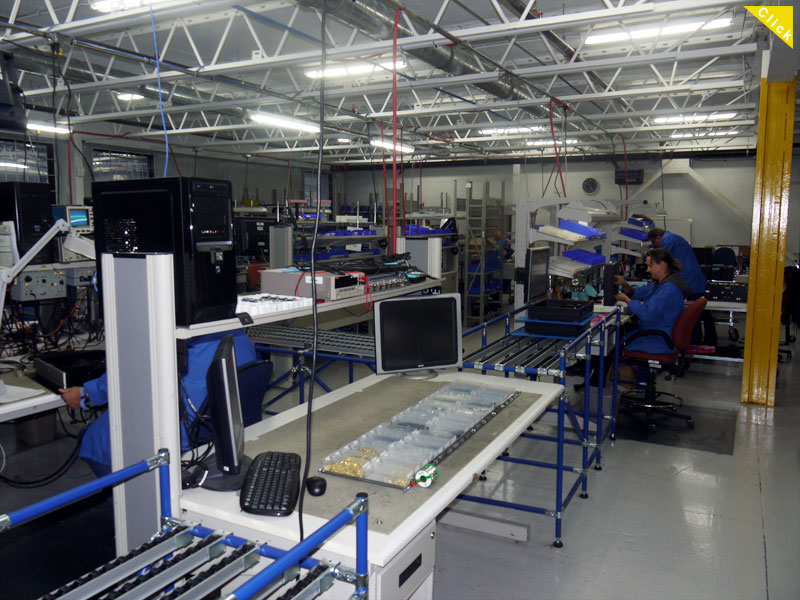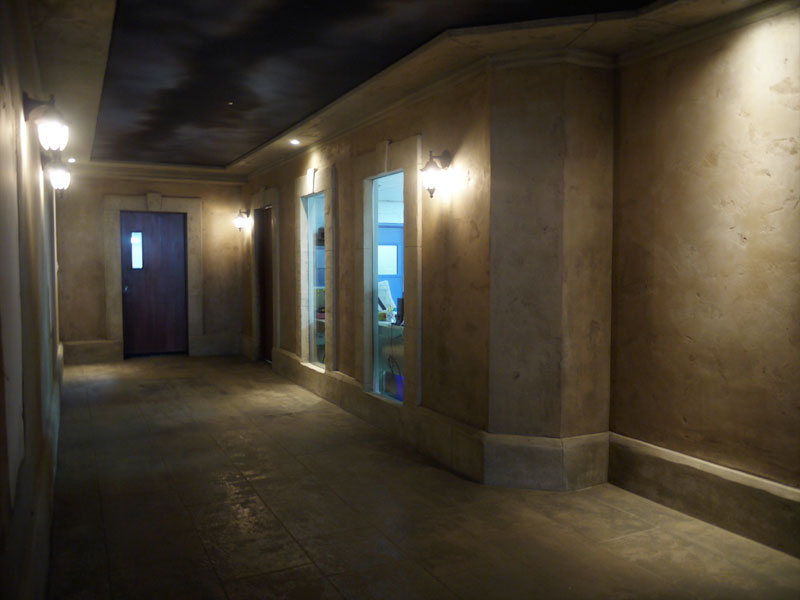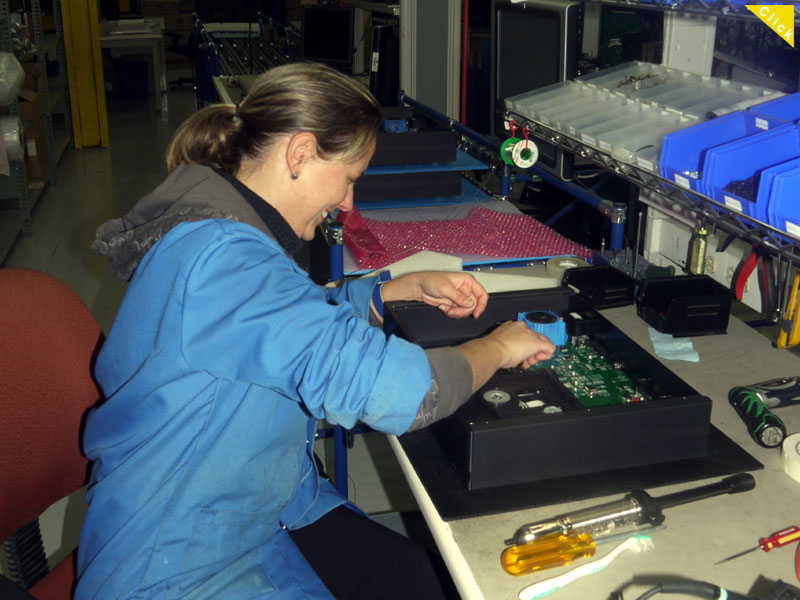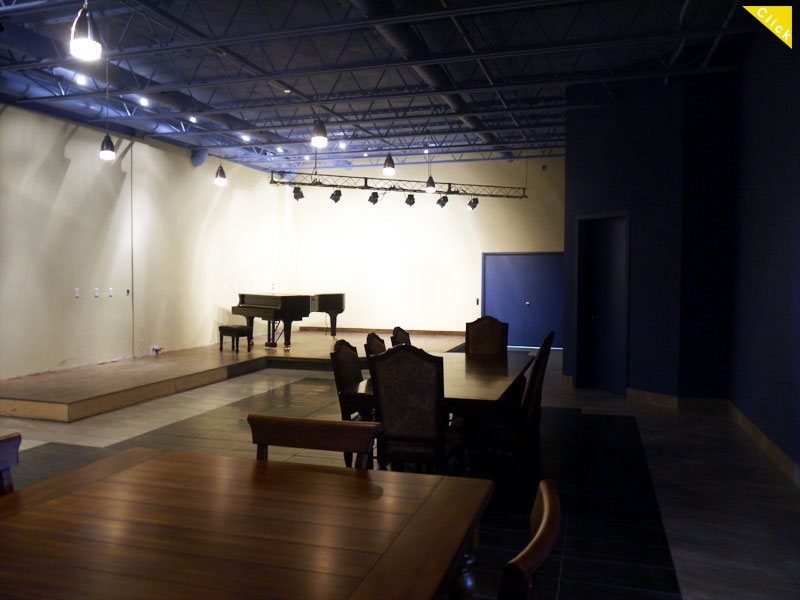New MOON Rising
f ever a company embodied the maxim "It’s not what you do, it’s the way that you do it" that company would be Simaudio. In business for thirty years, its story has been one of solid engineering and steady evolution, constant refinement of established principles rather than the erratic pursuit of the latest, greatest thing. It’s an approach that has stood them in good stead and garnered them an excellent reputation -- for the reliability of their products as well as the reliability of the company itself. In an industry bedeviled by fly-by-night manufacturers, all promising the earth and stars (until they disappear, only to reemerge a year or two later, squeaky clean and equally devoid of inconvenient baggage or a conscience, but fully furnished with a brand-new tale to tell) such stolid virtues aren’t necessarily the easiest sell, but as is so often the case, and as too many customers learn too late, it really is what’s behind the fascia that matters. Fortunately, enough audiophiles have learned that particular lesson to keep Simaudio in business and quietly thriving; thriving, in fact, to the point where they stand on the verge of a major step forward -- but more of that later. First, a little history. Early days
ounded in Montreal in 1980 by Victor Sima, Simaudio quickly established its products as a viable alternative to high-quality imports from the likes of Sugden. Those early models were, in the style of the day, four-square and plain-faced, reminiscent of the Cambridge Audio products so familiar in the UK. But pick one up and you quickly discovered that even back then they were equipped with unusually substantial power supplies and mains transformers. And although the brand did little to spread itself beyond the Canadian market, it certainly learned its early lessons well. The Sima brand gave way to the Celeste models in 1993, marked by the introduction of new styling, in the shape of semi-circular heatsink extrusions in place of the flat end caps previously used, and the consolidation of existing technology across the entire range. Dubbed "Renaissance technology," this included dual-mono circuitry, fully differential input stages and zero global feedback. But perhaps more important, 1993 also saw Jean Poulin join the company, assuming control a little over a year later. With a background in transformer design and manufacturing, he was a natural fit in a field where power-supply quality was assuming ever-greater importance. He immediately set out to apply the latest technologies to the range and sell it to a broader, international market. First evidence of this was the early adoption of remote control, followed in 1995 by the first introduction of DC-coupled circuitry. In 1997, Renaissance gave way to Advanced Renaissance, with direct-coupled topology applied across the range, along with shortened signal paths, the application of current compensation to significantly increase damping factor and all-aluminum casework. These seriously revised and updated designs formed the heart of the new MOON series, and also saw the first introduction of those trademark legs, slid onto the end-cap heatsinks. Amps and preamps were followed in 1999 by the company’s first CD player and later, in 2005, by the high-end MOON Evolution series. Moving on up
he steady growth outlined above soon had the Simaudio factory straining at the seams. Extensions and the creation of mezzanine floors can only create so much extra space, and six-months ago the company took possession of a far larger building, realizing a long-cherished dream and finally allowing it to implement plans that had been long in development. Simaudio run three parallel lines for their different product ranges, meeting at a single QC point. Part of this story is about the new production facility and the way it is laid out: the creation of three independent but parallel production lines, one for each chassis type the company produces, all linked to a shared QC chain; the provision of separate spaces for machining, finishing and screen printing metal parts; space dedicated to servicing and to producing specialized packaging; and above all, space for all of these departments to expand. The luxury of being able to arrange each of these functions in a logical and convenient pattern is not to be underestimated, improving both the workflow and efficiency of the production process, as well as reducing the incidence of damage to finished parts that inevitably occurs with moving them from place to place. None of the individual steps taken by Simaudio is particularly surprising in and of itself, but to find them all so neatly implemented in a single plant -- along with milling machines and a five-axis CNC for producing short-run casework, is unusual to say the least.
Not, however, as unusual as the admin corridor that runs from the reception and sales offices to the production area. Embracing product service, order processing, production management and product development (as well as a yet-unfinished but impressively large space for a dedicated listening room) the walls are clad in stone, each doorway sporting a heavy lintel and cartouche straight out of ancient Egypt. I kept half expecting Howard Carter to wander round the corner! But that’s not all; glance up and you’ll see the night sky, complete with stars, wispy clouds and (naturally) the moon rising in the distance. If you were assuming that Simaudio is just another hi-fi manufacturer, then walking the length of this passage should quickly dispel that view. The focused organization and quiet application on show underline just how seriously the company takes its business, while the space left for expansion reinforces that message. When so many companies are simply clinging on grimly to the business they have, in the hope of surviving the economic downturn, Simaudio’s eyes are fixed firmly on the future, a future that in product terms at least is represented by the latest additions to the MOON Evolution series. It’s not what you do. . .
he MOON electronics have always been recognized for their solid engineering and excellent value, delivering impressive performance at real-world price points. Although the company has been working its way slowly but steadily upmarket, not many commentators would have listed them amongst the highest of high-end contenders -- but that could (and should) be about to change. With the launch of the 850P line stage and 880M mono amplifiers, Simaudio have thrown down the gauntlet to those established high-end brands, and the message is clear: it’s time to put up or shut up. This is amplification that doesn’t just set a new standard for the MOON brand; it challenges the performance of the very best high-power solid-state amps out there. What makes it so special? After all, aren’t Simaudio all about steady evolution and incremental improvement? Well, yes, they are, but sometimes apparently small advances can combine to create a great leap forward -- and that’s just what has happened here. In order to understand what really makes these latest MOON Evolution products tick, you need to take a look under the hood and appreciate how the phenomenal attention to detail can generate such an exceptional result. The production staff is small but experienced. Let’s look at the issue of short signal paths. How many companies claim this as a design principle? How many go to the lengths of stacking a preamplifier’s gain stage, already condensed onto a four-layer board, directly on top of the output stage? In terms of construction and servicing, the resulting “sandwich” is a labor-intensive nightmare -- but that’s what happens if you take the importance of short signal paths seriously. Of course, it helps if you have complete confidence in the reliability of your circuits and components. Likewise the casework; the MOON products employ entirely aluminum mechanical construction. The horizontal heatsinks used at each end of the casework might not be essential (in the case of the preamps) or thermally efficient (in the case of the power amps), but they are rigid and extremely consistent, ensuring that the thick plates bolted to them aren’t twisted or stressed, creating nasty resonance spikes. The three-part front panels don’t ring and the legs couple the casework directly to the supporting surface -- no soft, spongy feet here. Internally, components are all selected through a process of blind testing, a regime which establishes the preferred component type for a given location in a particular circuit -- and no, it’s not always the fancy, audiophile “name” components that sound best. The toroidal transformers might not seem massive, especially given the amplifiers’ substantial output capabilities, but that’s because high-tech core materials make them significantly more efficient than conventional designs, a factor helped by the vacuum-encapsulation process also employed, which has the additional benefit of reducing mechanical output. Even the output devices themselves are a proprietary item, specially specified, selected and toleranced from the supplier. The audio board in the 850P preamp (and upcoming 810 phono stage) is suspended on expensive polymer isolators to prevent mechanical interference. The circuitry is DC coupled, servo protected and global feedback free, as well as being fully differential throughout. All in all, it’s an object lesson in doing the things that matter as well as you possibly can. Whilst Simaudio have certainly applied a few of their own wrinkles here (such as individually decoupled output devices to keep the amplifier’s output impedance low and damping factor extremely high) the vast majority of what you are hearing comes down to deciding what’s important and then pursuing it with almost obsessive determination. One step beyond
ut in many ways, the most impressive part of the new Simaudio facility lurks upstairs, quite separate from the quiet industry of the R&D and service departments or the production lines. Nearing completion is a massive guest suite, with a large social area/dining room, two listening rooms, a live stage and even accommodation space for those who get weary. This represents no small expense, but underlines more clearly than anything else just how committed Simaudio are to developing and maintaining relationships with their dealers and distributors. They already have an enviable reputation in this regard, longevity being a recurring theme, both within the company and in its external relationships. They are intensely proud of their "family" feeling, perhaps reinforced by their French-Canadian roots, but "the club," as it is half-jokingly known, takes that to a new level. "The club" offers a stage, a kitchen, space to eat. . . It is also a pragmatic response to the realities of audio manufacturing. No matter how much effort and care goes into your products, no matter how good they can sound, you are still relying on a third party to actually deliver, demonstrate and realize that performance potential. The more training you can undertake, the more knowledge you can impart, the more effectively you can extend your own culture of care and attention to detail, the greater the chance of customers actually receiving all of the performance they’ve paid for -- and coming back for more. Just as important, the manufacturer/dealer/distributor interface is a two-way street. If a manufacturer is genuinely interested in the shifting demands of the market as well as feedback on the performance (and failings) of their own products, this is the way to gather it. Working towards such a close, cooperative culture is definitely one way ahead, a way that Simaudio are clearly and irrevocably committed to. Such clarity of purpose is rare indeed; in this day and age it’s almost unheard of. One thing that should strike you about the Simaudio story is a certain sense of inevitability. It’s almost as if each step, each technique or topology that’s been adopted has been seamlessly grafted onto the whole, adding to its strength and stability. That’s not too far from the truth, although it does rather gloss over the occasional misstep along the way. But in practice those lessons have been learned and incorporated too, further adding to the robust confidence with which the company faces the future. At the end of the day there are two things that really impress me about Simaudio. The first is just how clearly they grasp the fact that a product -- inside a box or sitting in their warehouse waiting to be shipped -- is only as good as the performance it actually delivers. Not only do they recognize that fact, they are actually prepared to confront it and do something about it. Second, when times are hard and money is tight, customers are more inclined to opt for the safe option: the stable company, the reliable product, the soundest engineering. For once, in the case of the MOON components, "safe" doesn’t have to mean "sonically second-rate." With all the traditional virtues and flexibility of high-power solid-state design, Simaudio doesn’t just cover all the bases; it competes at all the important price points too. Sometimes, doing something well can take a lot longer
than you expect. But then, if it’s worth doing well, its also worth the wait. It
didn’t take Simaudio thirty years to make decent amplifiers; maybe it just took us
thirty years to notice they've done it. |




